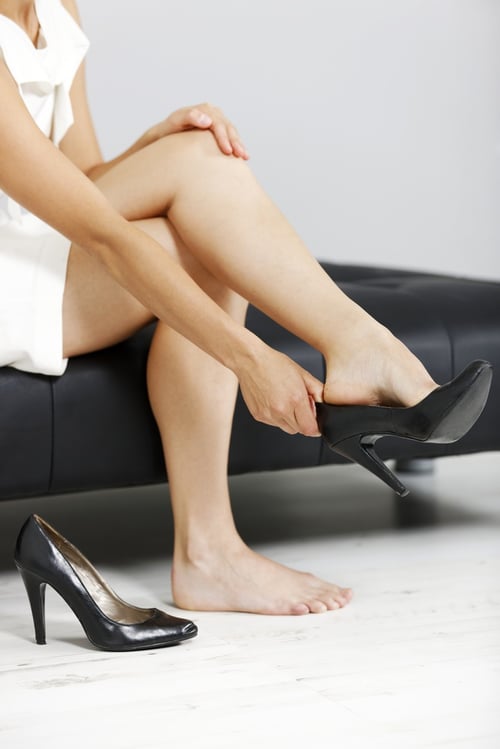Bunions are a common foot condition that can cause significant discomfort, pain, and mobility issues if left untreated. They often develop slowly over time and can impact your daily activities, from walking to wearing your favorite shoes. At Sweeney Foot & Ankle, we specialize in diagnosing, treating, and helping patients prevent bunions, ensuring you maintain a healthy, pain-free lifestyle. In this blog, we’ll share expert tips on how to treat and prevent bunions from worsening.
What Are Bunions?
A bunion is a bony bump that forms at the base of the big toe, where it meets the foot. Over time, pressure on the joint causes the big toe to lean toward the second toe, forcing the joint to stick out. Bunions can become inflamed, swollen, and painful, especially when walking or wearing shoes that are too tight.
Bunions may be caused by a combination of genetic factors, foot shape, and lifestyle choices, such as wearing tight or ill-fitting shoes. They can also be influenced by underlying conditions like arthritis. While bunions are more common in women, anyone can develop them.
How to Treat Bunions
If you’ve developed a bunion, there are several ways to treat it, depending on the severity of the condition. Here are a few treatment options that can help alleviate discomfort and prevent further progression:
1. Wear Supportive, Comfortable Shoes
Switching to shoes with a wide toe box can help relieve pressure on the bunion and reduce pain. Shoes that are too narrow, especially those with pointed toes or high heels, can worsen the condition. Opt for supportive, cushioned shoes with good arch support to promote proper alignment.
2. Use Bunion Pads or Splints
Bunion pads, available over-the-counter, provide a cushioning barrier between the bunion and your shoe, reducing irritation and pressure. Bunion splints can also be worn at night to help keep the big toe in a straighter position, offering relief and preventing further misalignment.
3. Apply Ice and Take Anti-Inflammatory Medications
To reduce swelling and inflammation, apply ice to the affected area for 15-20 minutes several times a day. Over-the-counter anti-inflammatory medications, such as ibuprofen, can also help alleviate pain and reduce swelling, especially during flare-ups.
4. Custom Orthotics
Custom orthotics are specially designed insoles made by your podiatrist to support your feet and correct alignment issues. By distributing weight more evenly across the foot, orthotics can help reduce the pressure on your bunion and slow its progression.
5. Physical Therapy and Stretching
Incorporating physical therapy and specific foot stretches into your routine can help improve flexibility, strengthen the muscles around the joint, and reduce discomfort. Exercises that target the toes, arches, and calf muscles can be particularly beneficial in maintaining proper foot function.
6. Bunion Surgery
In severe cases where conservative treatments are no longer effective, your podiatrist may recommend bunion surgery (also known as a bunionectomy). During surgery, the bone and soft tissue are realigned to correct the deformity and relieve pain. Your podiatrist will evaluate your condition and determine whether surgery is the best option for you.
How to Prevent Bunions
While bunions can be hereditary, there are several steps you can take to prevent them from developing or worsening:
1. Choose the Right Footwear
Wearing shoes that fit properly is one of the most effective ways to prevent bunions. Avoid shoes that are too tight, narrow, or have pointed toes. Instead, opt for shoes with a wide toe box that allow your toes to spread naturally. Low-heeled shoes are preferable, as high heels can put excess pressure on the front of your feet.
2. Maintain a Healthy Weight
Carrying extra weight can put additional strain on your feet, increasing the risk of bunion formation. Maintaining a healthy weight through regular exercise and a balanced diet can help reduce pressure on your feet and lower your risk of developing bunions.
3. Use Arch Support
Proper arch support helps distribute weight evenly across your foot, reducing pressure on specific areas like the bunion-prone joint. Custom orthotics or over-the-counter arch supports can help promote proper foot alignment and prevent bunions.
4. Strengthen Foot Muscles
Incorporating foot-strengthening exercises into your routine can help improve the stability and alignment of your toes and feet. Exercises like toe curls, toe spreads, and calf stretches can strengthen the muscles around the joint and reduce the risk of bunions.
5. Monitor Your Foot Health
If you have a family history of bunions or notice early signs of a bunion, such as a slight bump or soreness at the base of your big toe, it’s essential to take action early. Regular checkups with a podiatrist can help identify any issues before they become more severe.
Bunions can be painful and disruptive, but with the right approach, they can be managed effectively. At Sweeney Foot & Ankle, we are dedicated to helping you treat and prevent bunions through personalized care and expert guidance.
If you’re experiencing bunion pain or want to take steps to prevent them, don’t hesitate to schedule an appointment with our podiatry team. We’ll help you find the best treatment plan for your unique needs and keep your feet healthy for the long term!







